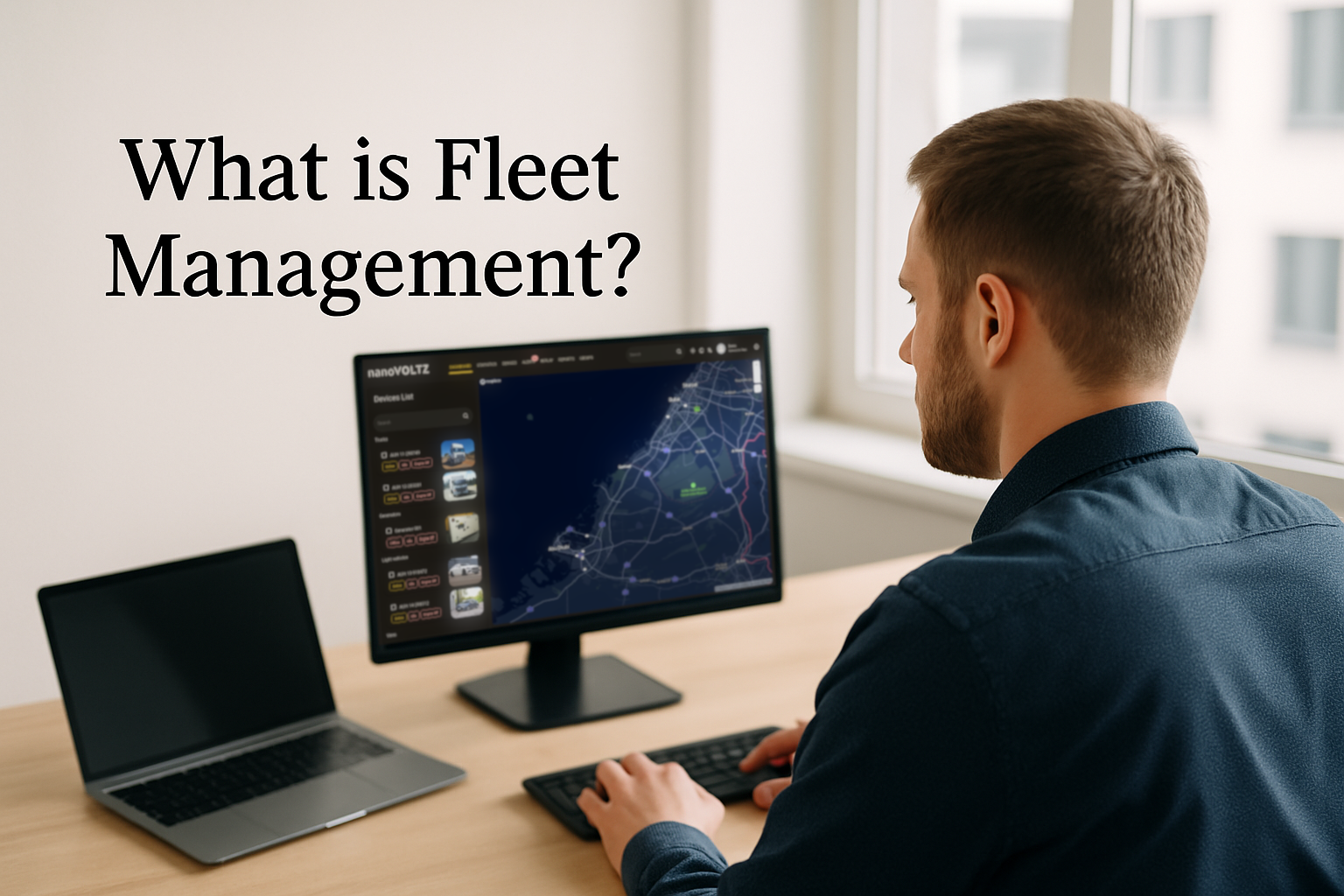What Is Fleet Management?

Fleet management refers to the process of overseeing, organizing, and coordinating a fleet of vehicles to ensure optimal efficiency, safety, and compliance. Businesses that rely on transportation, such as logistics companies, delivery services, and field service providers, use fleet management systems to track vehicle locations, monitor driver behavior, and improve operational performance.
Fleet management is not just about tracking vehicles; it involves strategic planning, cost control, regulatory compliance, and the integration of advanced technologies. With the rise of telematics, artificial intelligence, and automation, fleet management has become more sophisticated, allowing businesses to maximize productivity while minimizing risks.
Key Components of Fleet Management
Effective fleet management consists of multiple components, each playing a vital role in ensuring seamless operations.
1. Vehicle Tracking and Telematics
Modern fleet management heavily relies on GPS tracking and telematics to provide real-time data on vehicle locations, route efficiency, and performance metrics. GPS tracking allows businesses to:
- Monitor vehicle movements in real-time
- Optimize routes for efficiency and cost savings
- Reduce fuel consumption and emissions
- Enhance customer service by providing accurate delivery estimates
Telematics, on the other hand, involves collecting data from vehicles, including speed, acceleration, fuel usage, engine diagnostics, and driver behavior. This data helps fleet managers make informed decisions to improve efficiency and reduce costs.
2. Driver Behavior Monitoring
Monitoring driver behavior is essential for fleet safety and efficiency. Harsh braking, speeding, excessive idling, and aggressive driving not only increase fuel costs but also pose safety risks. Fleet management systems with driver behavior analytics help:
- Reduce accident risks through real-time alerts and coaching
- Identify unsafe driving patterns and provide corrective training
- Lower insurance premiums by maintaining a safe driving record
- Improve compliance with road safety regulations
3. Maintenance and Repairs
Regular vehicle maintenance is critical to preventing breakdowns and ensuring long-term fleet reliability. Fleet management software helps businesses:
- Schedule routine maintenance based on mileage or usage
- Track repair history and maintenance costs
- Receive alerts for engine issues and diagnostic trouble codes (DTCs)
- Minimize downtime by predicting potential mechanical failures
Proactive maintenance strategies prevent unexpected expenses and improve the lifespan of fleet vehicles.
4. Fuel Management
Fuel is one of the highest operational costs for fleet-based businesses. Effective fuel management involves tracking fuel consumption, identifying inefficiencies, and implementing strategies to reduce waste. Key aspects of fuel management include:
- Monitoring fuel usage and trends across the fleet
- Detecting fuel theft or unauthorized fueling
- Encouraging fuel-efficient driving behaviors
- Implementing alternative fuel or electric vehicle strategies
By reducing fuel costs, businesses can significantly enhance profitability.
5. Compliance and Regulatory Requirements
Fleet managers must ensure that all vehicles and drivers comply with industry regulations, such as:
- Hours-of-Service (HOS) regulations: Ensuring drivers adhere to legal working hours to prevent fatigue-related accidents.
- Emissions Standards: Ensuring vehicles meet environmental regulations and sustainability goals.
- Vehicle Inspections: Keeping up with mandatory safety inspections to avoid fines and legal issues.
- Electronic Logging Devices (ELD): Implementing digital tracking systems for driver hours and activity logs.
Non-compliance with these regulations can result in penalties, operational disruptions, and reputational damage.
The Role of Technology in Fleet Management
Technology has revolutionized fleet management by introducing automation, artificial intelligence, and data analytics. Some of the most impactful technological advancements include:
1. Artificial Intelligence (AI) and Machine Learning
AI-powered fleet management solutions analyze large datasets to identify patterns and predict potential issues. AI helps in:
- Route optimization based on traffic patterns and weather conditions
- Predictive maintenance to prevent costly breakdowns
- Fraud detection, such as identifying fuel theft or unauthorized vehicle use
2. Internet of Things (IoT) and Connected Vehicles
IoT-enabled sensors and devices provide real-time data on vehicle health, driver behavior, and environmental conditions. IoT in fleet management helps in:
- Real-time diagnostics and performance monitoring
- Preventive maintenance based on sensor data
- Seamless communication between fleet managers and drivers
3. Autonomous Vehicles and Automation
While fully autonomous fleets are still in development, automation is already improving fleet operations through:
- Self-parking and lane assistance technologies
- Automated dispatching and route planning
- AI-driven driver assistance systems for improved safety
Benefits of Fleet Management
Implementing a fleet management system offers numerous advantages that directly impact a business’s bottom line.
1. Cost Savings
Fleet management systems help businesses cut costs by optimizing fuel consumption, reducing maintenance expenses, and minimizing downtime. Predictive analytics further prevent expensive breakdowns and repairs.
2. Improved Safety
Driver monitoring, AI-driven safety alerts, and training programs contribute to fewer accidents and insurance claims. Enhanced safety protocols also protect company assets and personnel.
3. Enhanced Productivity
Automated tracking, real-time updates, and route optimization streamline fleet operations. This efficiency allows businesses to deliver faster services and maximize resource utilization.
4. Better Customer Service
With accurate tracking and delivery estimates, businesses can provide better service to customers. Timely deliveries, transparency, and proactive communication improve customer satisfaction.
5. Sustainability and Environmental Responsibility
Reducing fuel consumption, optimizing routes, and using alternative energy sources contribute to sustainability efforts. Many companies adopt electric or hybrid vehicles to lower their carbon footprint.
Conclusion
Fleet management is an essential aspect of businesses relying on transportation, logistics, and service vehicles. With the integration of telematics, AI, and automation, fleet management is becoming more advanced, helping companies reduce costs, improve safety, and increase operational efficiency. Investing in a robust fleet management system is crucial for businesses looking to scale, optimize performance, and remain competitive in today’s fast-paced economy.









